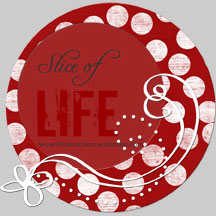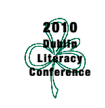This is my last reflective post from the Dublin Literacy Conference, which took place in Ohio last weekend. Along with working with teachers, I was asked to lead a family session, too, which I readily agreed to. I love that kids and their parents are invited to attend portions of a conference for teachers, and so I suggested a session around stopmotion movie making.
Well, there was a big response, to put it mildly (about 125-150 people in the session), and the music room was packed with kids and parents. Luckily, I had some idea of the numbers beforehand and while I knew I wanted to make a movie before their eyes in the hour that we had together, I mulled over some possibilities.
How do you get a lot of kids involved in making a movie in a short time? My answer was to use bendable WikiStix, which we handed out to kids as they entered the room and gave instructions to create some strange character. Some of the kids looked at me strange, others didn’t say a word, and others asked for further instructions. Just like my own classroom (including the strange looks)!
And so, using my webcam, a freeware program and Moviemaker, we made a Wikistix Conga line stopmotion movie in a short amount of time.
I used a black music stand that was in the room for the background, which worked well for the bright colored creatures but not so well for the dark ones. I tried to talk my way through the process, which everyone watched on the screen. I had kids line up with their creations (and put a student at my computer to take the frame shots), and we moved the creatures across our “set” one frame at a time. I think they were pretty excited to be involved in a movie, but they also got a sense of the time and patience it takes to make a movie, too (a valuable lesson).
I had two kids come up and voice the title and the credits and now the movie is part of my Making Stopmotion Movie website resource, with a link for the kids who were there to download a version of the video.
They asked some great questions, too, such as how long does it take to make a short movie? What materials do you need? What advice would I give?
What was great was when I asked who might go home and try to make a movie, almost every hand in the room shot up. And many parents came up to me afterwards, asking follow-up questions. (A lot of the kids wanted to know where they could buy Wikistix, which are perfect for stopmotion, I have found. Luckily, one smart vendor had them for sale out in the conference hall).
Wouldn’t it be cool if even half of the kids there made a movie?
Peace (in the frames),
Kevin



